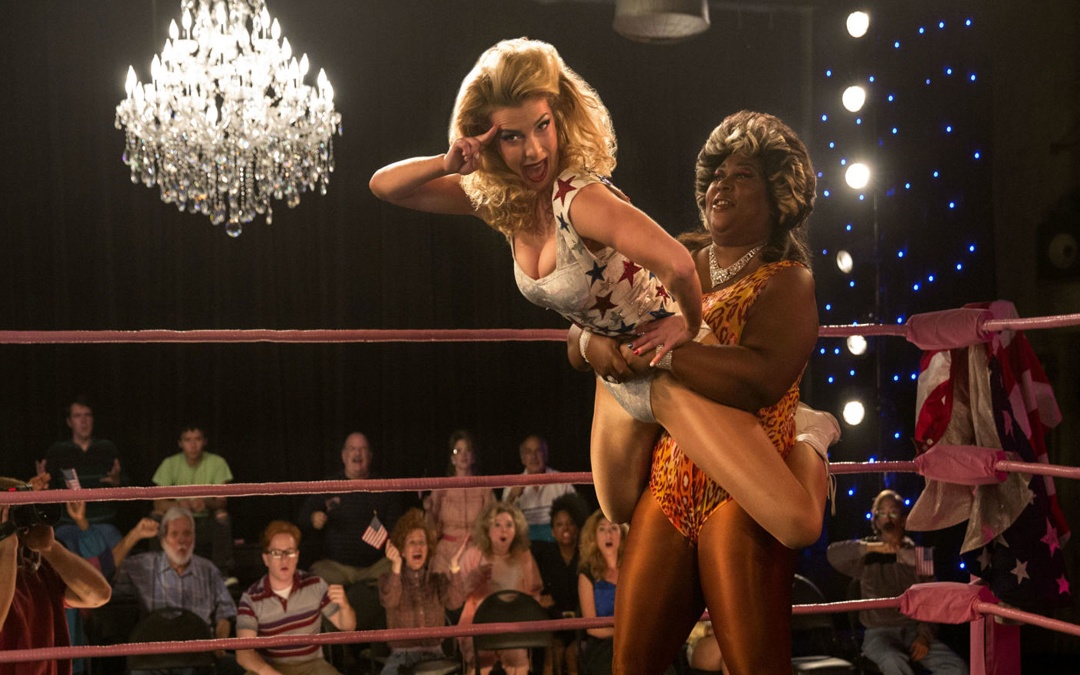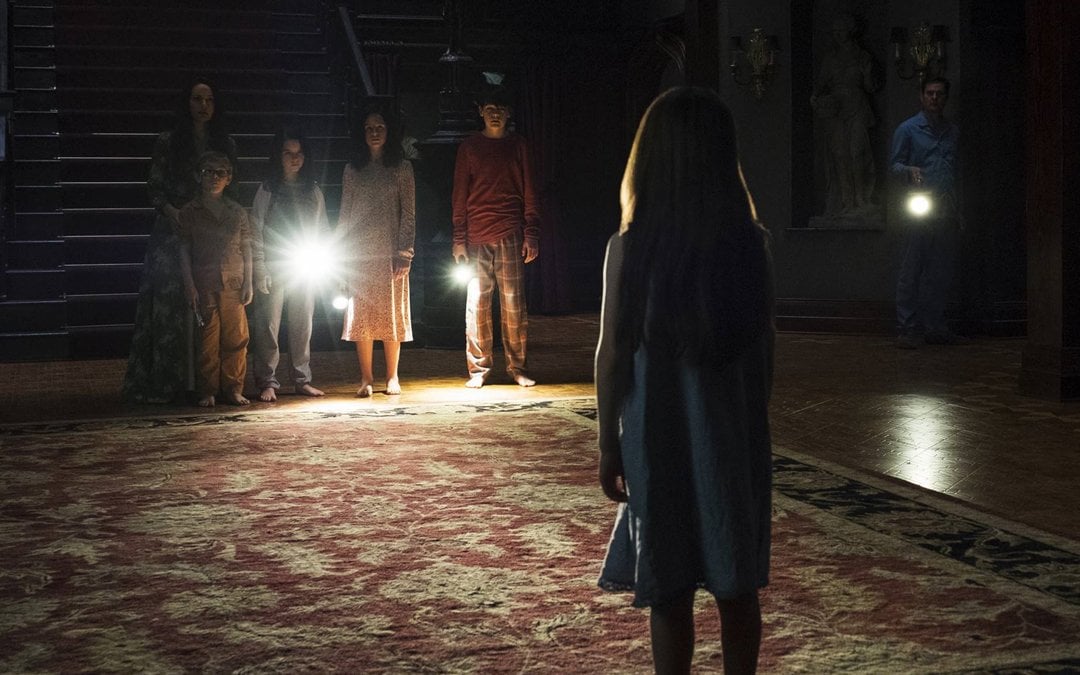All the Write Moves: Pose
July 2, 2018
One fascinating aspect of the peak-TV era is the growth of narrowcasting. Simply put, narrowcasting (a term that goes back to the 1940s) means creating specialized content for specialized audiences. Two factors make this concept central to the peak-TV era. First, the sheer number of shows today makes it impossible for even the most devoted viewer to consume every worthwhile program. Second, the way time-shifting knocked on-air advertising from its perch atop the media pyramid fundamentally altered TV economics.
Today, shows can become successful with smaller ratings than ever before, so long as those shows consistently draw members of desirable target demos.On one level, this set of circumstances creates opportunities—shows dominated by minority characters need not carry the extra burden of softening or translating minority culture in order to lure non-minority viewers who are hesitant to venture beyond their own frames of reference. Yet on another level, this set of circumstances can lead to marginalization—shows dominated by black and brown characters, for instance, often appear and disappear without mainstream (read: white) audiences ever becoming aware those shows existed.
Which brings us to Pose, the lively drama/musical show that recently debuted on FX. Featuring more trans characters than any previous scripted series, Pose is a specialty show—but it is not designed exclusively for specialty audiences, and it does not whitewash its exploration of economics, gender, and race. Even though logic might suggest that a show predominantly about LGBTQ persons of color would be the epitome of narrowcasting, Pose defies expectations.
The series aspires in clever ways to be a series for everyone. Without distorting the lived experiences of LGBTQ persons whose culture inspired the show, Pose is accessible and optimistic and sincere. It’s also highly entertaining, with bursts of crackling camp dialogue and show-stopping sequences of exuberant voguing set to a thumping soundtrack of vintage disco, pop, and R&B music. Instead of pushing away those who don’t already know about the “ball culture” world of 1980s New York, Pose invites everyone to the party.
In the pilot’s main narrative, trans performer Blanca Rodriguez (MJ Rodriquez) starts a new “house” after leaving a collective where she felt underappreciated. Gathering a crew of performers who don’t fit in elsewhere, Blanca provides a nurturing home for LGBTQ characters including Damon (Ryan Jamaal Swain), a homeless wannabe dancer, and Angel (Indya Moore), a sex worker. The show’s secondary narrative involves white characters who are tangentially connected to Donald Trump, notably Stan (Evan Peters), an ambitious young businessman who secretly patronizes Angel, even though Stan has a wife and kids.
This setup allows the series to explore how two very different New Yorks existed simultaneously in 1987—the yuppie world of conspicuous consumption, and the street world of AIDS and hardship and underground art. (Full disclosure: Steven Canals, who co-created the show with Brad Falchuck and super-producer Ryan Murphy, is a personal friend.) But how, exactly, does Pose draw viewers into its world? Read on . . .
Props to Madonna
Most Americans had never encountered any aspect of ball culture before Madonna showcased the culture’s distinctive dance moves in the video for her 1990 hit single “Vogue.” Although the Pose pilot doesn’t reference that song, Madonna gets name-checked during the cold open, which also references elements that are familiar to fans of RuPaul’s Drag Race, such as the excitement of “walks” by performers, the heat of club music, and the rebellious nature of ball culture. During the cold open, members of “The House of Abundance” rob a museum for costumes that they subsequently wear during a triumphant walk
In sum, the cold open accentuates all the aspects of the show’s world that mainstream viewers can recognize—and presumably, therefore, accept with less resistance than challenging issues related to economics, gender, and politics. It’s the equivalent of making small talk before diving into a tough conversation, although challenging issues permeate the very next act of the pilot and, for that matter, the rest of the episode.
Takeaway: Razzle-Dazzle Before Rhetoric
Family First
Act One of the pilot is all about engendering sympathy for leading characters. The show cuts from New York City to working-class Allentown, Pennsylvania, where Damon rushes into his suburban bedroom so he can privately dance to Donna Summer’s old-school jam “On the Radio.”
Damon’s happy interlude gets interrupted by his enraged father, who bursts into Damon’s room reveals that he found a gay porno magazine under Damon’s bed. Citing his religious beliefs, the father disowns Damon. Later in the sequence, Damon’s mother turns on him, as well, leading to a poignant scene of Damon standing alone and tearful outside his own home as neighbors gawk.
Not all of us share Damon’s specific experience, but we’ve all felt alone.
Act One puts Blanca into a dire situation of her own. She tells off Elektra (Dominique Jackson), the oppressive “mother” of the House of Abundance, for repeatedly appropriating Blanca’s ideas, then quits the house—only to learn shortly afterward that she’s HIV-positive.
Not all of us share her specific experience, but we’ve all felt overwhelmed.
And here’s where optimism enters the storytelling—instead of wallowing in self-pity, Blanca surprises viewers by expressing empathy for the doctor who delivered her diagnosis. Then she resolves to build a legacy by forming a new house whose members are treated with encouragement and respect, plus a little tough love when necessary.
Together, these important sequences situate Damon and Blanca as underdogs—quite a change from standard-issue mainstream stories about trans characters, which tend to position them as victims.
Takeaway: Ground Unusual Stories in Relatable Emotions
The Trump Connection
Playing the guy in the Trump organization who hires Even Peters’ character, onetime Dawson’s Creek star James Van Der Beek gets a showy first scene in the Pose pilot, talking about the joy of being rich before sniffing coke off a glass coffee table and saying, “God bless Ronald Reagan.” The scene evokes Wall Street (1987) and Bright Lights, Big City (1988) while forming a tangible connection between the events of Pose and the world of 2018.
Attacking this subject matter gives Pose even more muscle than it might have otherwise, but it’s informative to notice when the show gets to the Trump material—after wowing viewers with the excitement of the dance world and after grounding the story in powerful emotions.
Generally speaking, audiences don’t like receiving lectures from popular entertainment—but if the makers of popular entertainment proceed carefully, they can engender sufficient goodwill from audiences to present potentially divisive political material within a thoughtfully constructed context.
Takeaway: Earn Your Audience’s Trust Before Getting Topical
Let’s Dance
Bringing the storytelling full circle, the pilot climaxes with the contagious joy of a dancer in full flight. The high point of the pilot’s last act is an extended dance number designed to evoke a similar scene in Flashdance (1983). There’s a reason this choice is so effective.
While one hopes that conscientious persons might tune into a show providing sober ruminations the social and economic disparities of 1980s New York City, chances are nobody would seek out such a show for light entertainment. But a show with energetic dance numbers and familiar pop songs and rich emotional landscapes? That’s another matter.
And that’s how Pose functions as a specialty show without being a specialty show. Instead of narrowcasting, the show represents broadcasting in the most egalitarian sense of that word.
Takeaway: Put on a Show, Not a Lecture
Written by: Peter Hanson
Peter Hanson is a Los Angeles-based writer, filmmaker and teacher. He directed the screenwriting documentary Tales from the Script, and he teaches at Pepperdine University and UCLA Extension. He provides script consulting at www.GrandRiverFilms.com.- Topics:
- Discussing TV & Film




